Author: Jason Cipriani
Developed by Select Botanicals Group, Simcoe hit the scene in 2000 quickly rose to the top of many a brewer’s favorite variety list not only for its high alpha acid and low cohumulone content, but for the pungent citrus and pine characteristics it lends to beer. While some claim to perceive a cat urine aroma in beers hopped with Simcoe, the variety has stood the test of time and continues to be used quite heavily in modern American Pale Ale and IPA.
Alpha: 11.5 – 15%
Beta: 3 – 4.5%
Cohumulone: 17 – 21%
Total Oil: 0.8 – 3.2 mL/100g
Myrcene: 40 – 50%
Humulene: 15 – 20%
Caryophyllene: 8 – 14%
Farnesene: < 1%
Linalool: 0.5 – 0.9%
Geraniol: 0.8%
ß-Pinene: 0.5 – 1%
Parentage: Unknown due to YCH keeping lineage a secret
Due in large part to Simcoe’s massive popularity, I’ve had several commercial beers hopped with it, many in which it was the star variety. I’ve also made quite a few beers hopped heavily with Simcoe, some of which were delicious, while others exhibited an overwhelming “catty” character. I was excited to see what blind tasters would think of a simple Pale Ale hopped solely with the highly praised Simcoe variety!
| MAKING THE BEER |
The recipe for this beer was designed specifically for The Hop Chronicles with an easy drinking grist and copious amounts of Simcoe hops.
Simcoe Pale Ale
Recipe Details
| Batch Size | Boil Time | IBU | SRM | Est. OG | Est. FG | ABV |
|---|---|---|---|---|---|---|
| 6 gal | 60 min | 35.3 IBUs | 4.1 SRM | 1.053 | 1.014 | 5.1 % |
| Actuals | 1.053 | 1.01 | 5.6 % | |||
Fermentables
| Name | Amount | % |
|---|---|---|
| Pale Malt, 2-Row (Rahr) | 6 lbs | 50 |
| Pale Malt, Maris Otter | 6 lbs | 50 |
Hops
| Name | Amount | Time | Use | Form | Alpha % |
|---|---|---|---|---|---|
| Simcoe | 16 g | 60 min | Boil | Pellet | 11.9 |
| Simcoe | 21 g | 10 min | Boil | Pellet | 11.9 |
| Simcoe | 64 g | 2 min | Boil | Pellet | 11.9 |
| Simcoe | 85 g | 3 days | Dry Hop | Pellet | 11.9 |
Yeast
| Name | Lab | Attenuation | Temperature |
|---|---|---|---|
| Urkel (L28) | Imperial Yeast | 73% | 52°F - 58°F |
Notes
| Water Profile: Yellow Bitter in Bru’n Water Spreadsheet |
Download
| Download this recipe's BeerXML file |
The night prior to brewing, I built an adequately sized starter using Imperial Yeast L28 Urkel.
Once the yeast was spinning, I proceeded to collect my brewing water then weigh out and mill the grains.
The next morning, I loaded the recipe into my Grainfather controller and had it begin to heat my strike water. A little bit later I mashed in then checked to make sure I hit my target mash temperature.

A pH reading about 15 minutes into the mash came in a little higher than planned, indicating something with my water was a little off, but nothing to be alarmed over.

Following the 60 minute saccharification rest, I removed the grains and proceeded to sparge.

Once the sparge was complete, I began heating the wort to a boil, weighing out the kettle hop additions during the wait.
The wort was boiled for 60 minutes with hops added at the points indicated in the recipe. When the boil was finished, I used the Grainfather CFC to very quickly chill the wort.
A hydrometer measurement at this point showed I hit my target 1.052 OG on the nose.
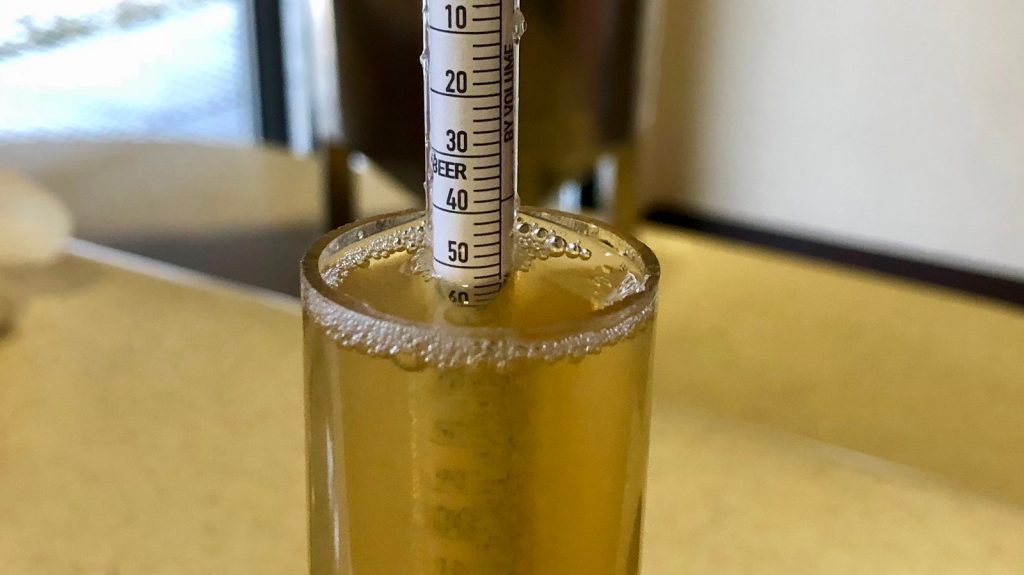
I placed the filled Brew Bucket in my fermentation chamber and had to let the wort warm for a little bit, as my icy cold Pueblo, CO groundwater chilled it too much. Once it was at my desired fermentation temperature of 66°F/19°C, I pitched the starter. Checking on it the following morning, I noticed the airlock bubbling away. After 5 days of active fermentation, I raised the temperature in my chamber to 72˚F/23˚C and let it sit another 3 days before taking a hyrdometer measurement that confirmed FG had been reached.
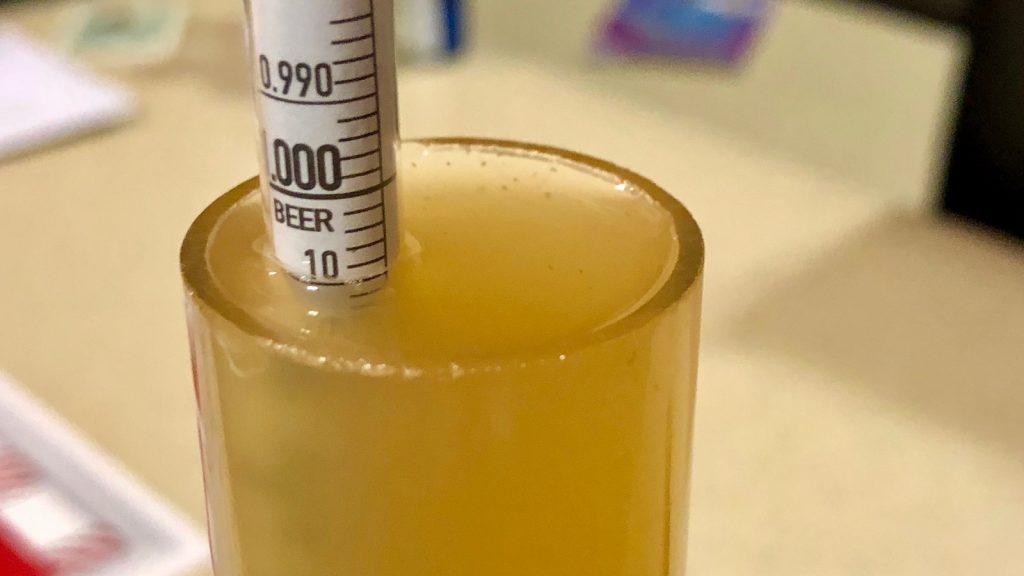
I then added the dry hop charge, which mingled with the warm beer for 3 days before I moved on to cold crashing and kegging.
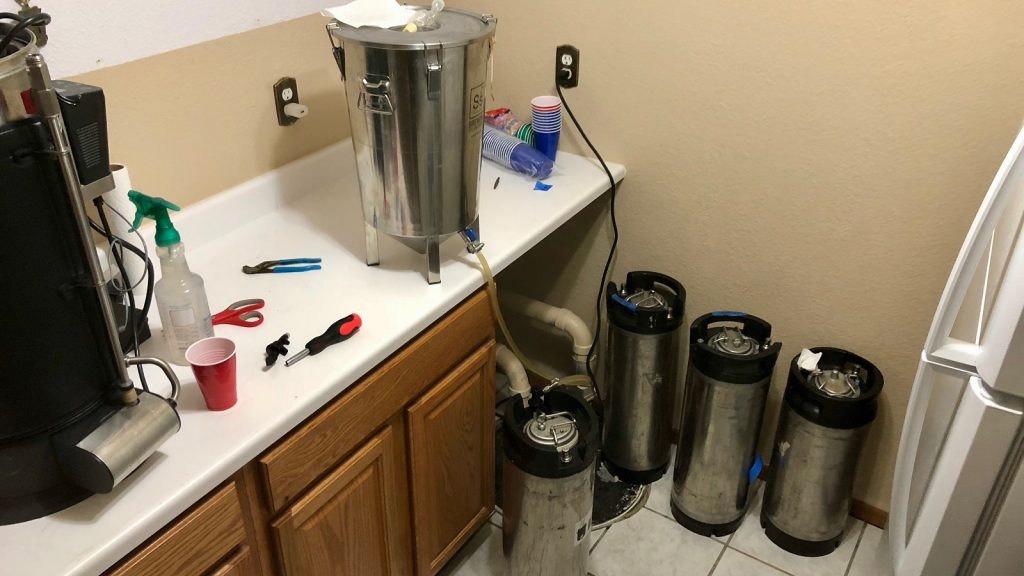
Three days later I proceeded with cold crashing and kegging the beer. The filled keg was then placed in my keezer, and the beer was burst carbonated overnight before I reduced the gas to serving pressure. After a few more days of conditioning, it was clear, carbonated, and ready to serve.
| METHOD |
Participants were instructed to focus only on the aromatic qualities of the beer before evaluating the flavor. For each aroma and flavor descriptor, tasters were asked to write-in the perceived strength of that particular characteristic on a 0-9 scale where a rating of 0 meant they did not perceive the character at all and a rating of 9 meant the character was extremely strong. Once the data was collected, the average rating of each aroma and flavor descriptor was compiled and analyzed.
| RESULTS |
A total of 13 people participated in the evaluation of this beer, all blind to the hop variety used until after they completed the survey. The average aroma and flavor ratings for each descriptor were plotted on a radar graph.
Average Ratings of Aroma and Flavor Perceptions
The 3 characteristics endorsed as being most prominent by participants:
| Aroma | Flavor |
| Citrus | Citrus |
| Tropical Fruit | Tropical Fruit |
| Pine | Pine |
The 3 characteristics endorsed as being least prominent by participants:
| Aroma | Flavor |
| Onion/Garlic | Onion/Garlic |
| Earthy/Woody | Berry |
| Berry | Dank/Catty |
Participants were then asked to rate the pungency of the overall hop character.
Next, they were instructed to identify beer styles they thought the hop would work well in.
Finally, tasters were asked to rate how much they enjoyed the hop character on a 1 to 10 scale.
My Impressions: Simply put, this is the best American Pale Ale I’ve ever made. The bitterness was smooth and didn’t linger, something I’m compelled to believe is due to Simcoe’s low cohumulone, which I thought played quite nicely with the subtle malt sweetness. Unexpectedly, I didn’t perceive any of the catty aroma or flavor I’d picked up in other highly hopped Simcoe beers, rather it had a well rounded citrus and pine character that I really enjoyed.
| CONCLUSION |
Based on the blind taster data, one could conclude that Simcoe imparts moderately pungent citrus, tropical fruit, and pine characteristics that work well in American Pale Ale and IPA. Despite the apparent consensus among brewers that this variety has a tendency to produce a certain cat urine quality, those who evaluated this single hop Simcoe beer didn’t seem to notice it much, as that descriptor was rated fairly low for both aroma and flavor.
For fun, I informally surveyed a few tasters following a data collection session, asking them to guess what hop they thought I used to make this Pale Ale. Not a single person correctly identified Simcoe, while most thought it was either Mosaic or Citra.
To my palate, the Simcoe hopped Pale Ale I made did share some characteristics with some of the more commonly used modern hops of the day, though I felt it wasn’t quite as in-your-face as some newer varieties, which is kind of nice. The beer tasted like beer, not hop juice, and while I’m pretty certain I’ve experienced the catty thing from Simcoe in the past, it was delightfully absent in this batch.
I forgot how great Simcoe is and while I definitely plan to use it more often in combination with other varieties, I’m looking forward to brewing more single hop beers with it as well.
Simcoe is available now in various package sizes at Yakima Valley Hops, get them while you can! If you have any thoughts on this variety, please feel free to share them in the comments section below.
Support for The Hop Chronicles comes from Yakima Valley Hops, suppliers of over 40 varieties of hops ranging from classics like Saaz and Cascade to yet-to-be-named experimental options fresh from the source. Offering great prices with reasonable shipping, consider Yakima Valley Hops for your next hop purchase.
Support Brülosophy In Style!
All designs are available in various colors and sizes on Amazon!
Follow Brülosophy on:
FACEBOOK | TWITTER | INSTAGRAM
If you enjoy this stuff and feel compelled to support Brulosophy.com, please check out the Support Us page for details on how you can very easily do so. Thanks!



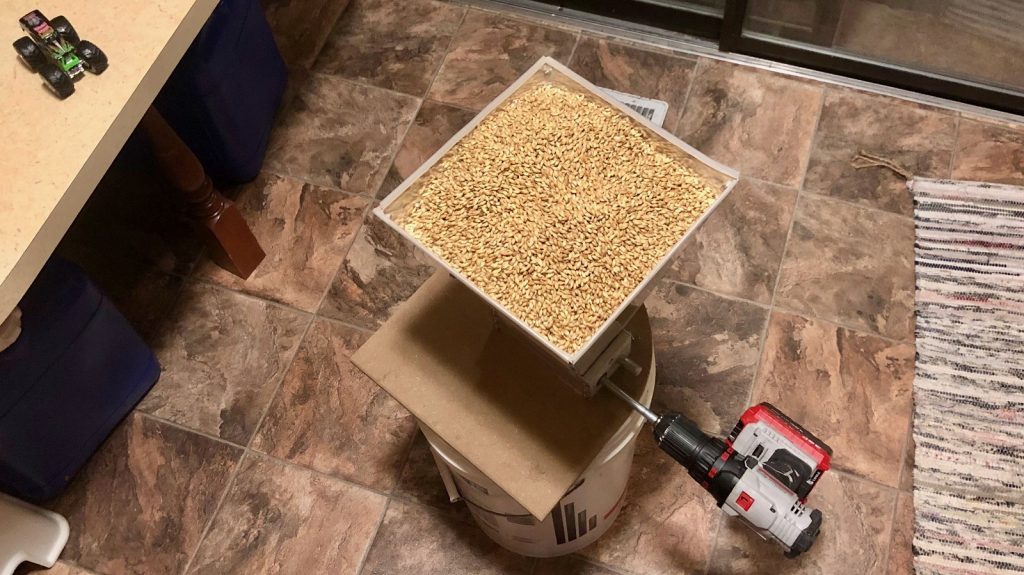


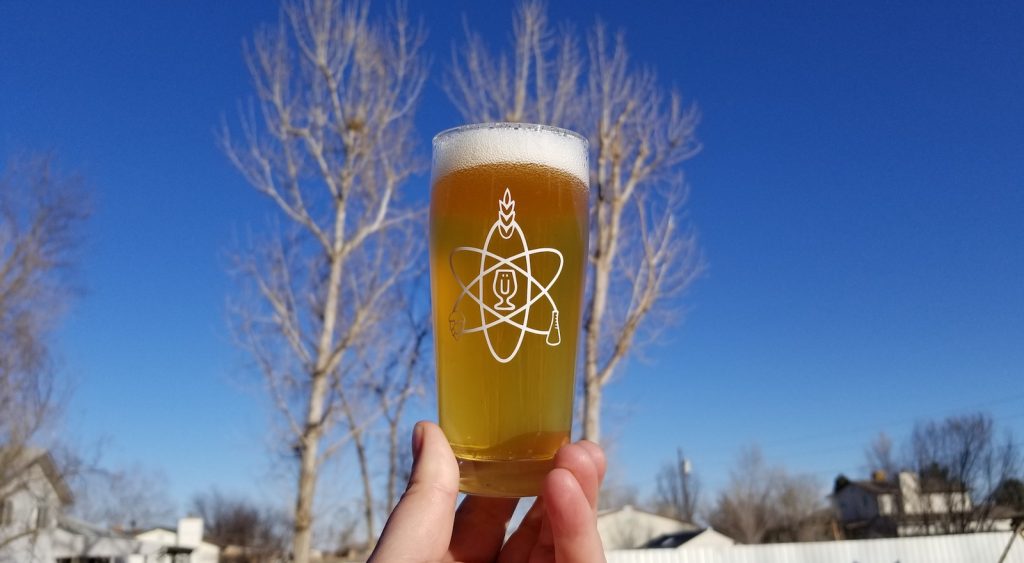
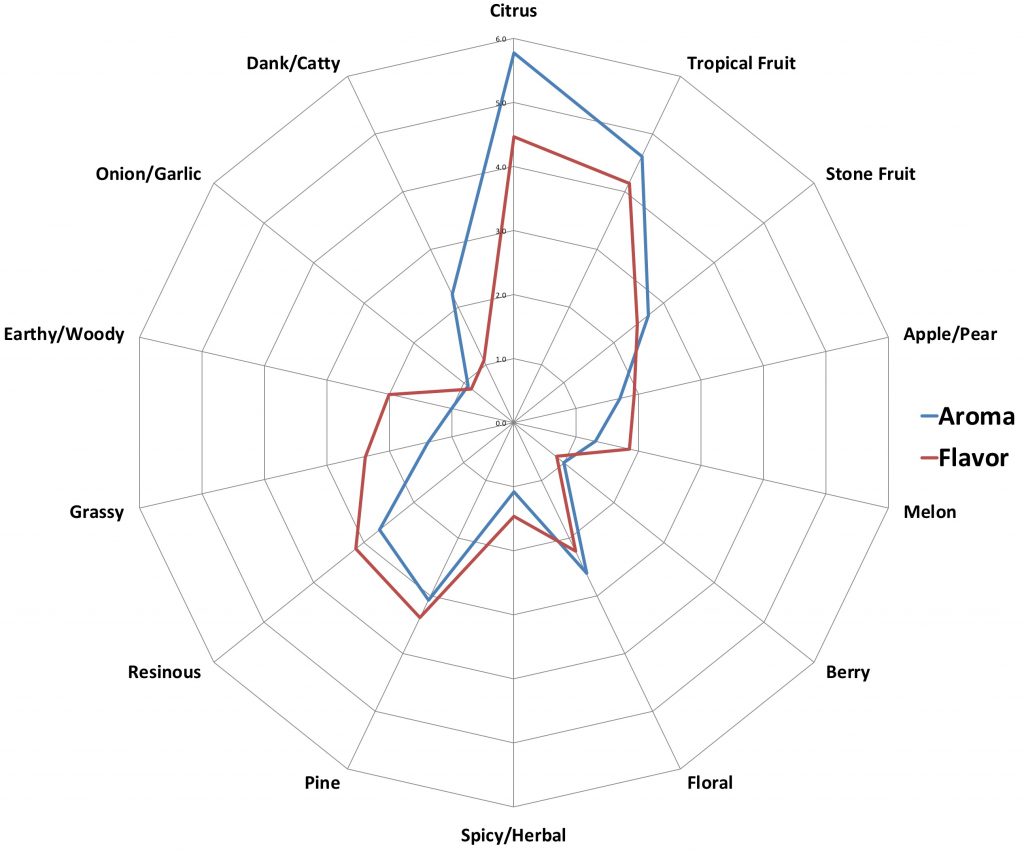
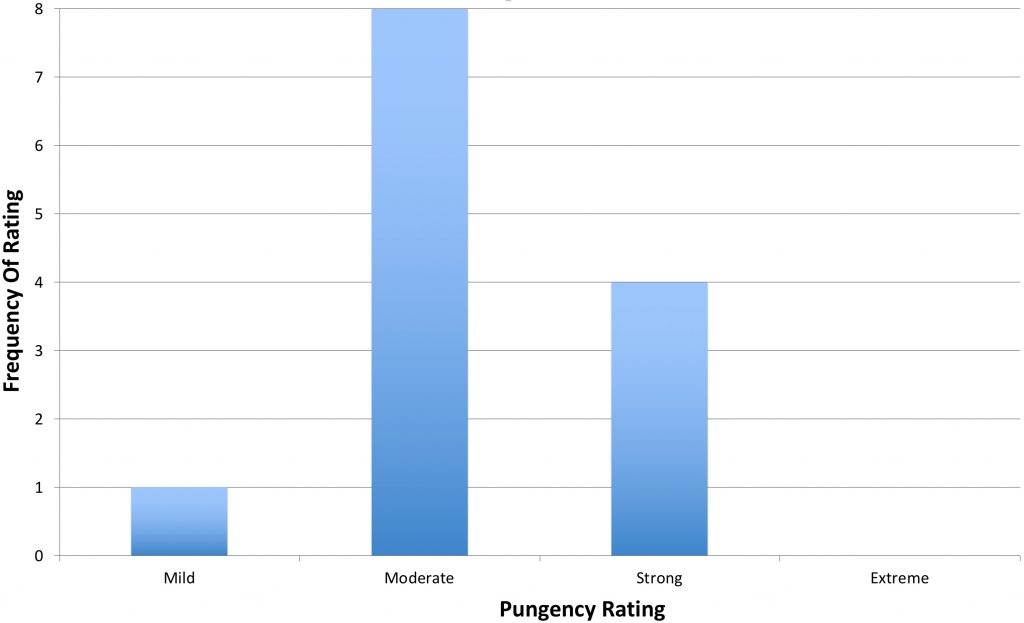
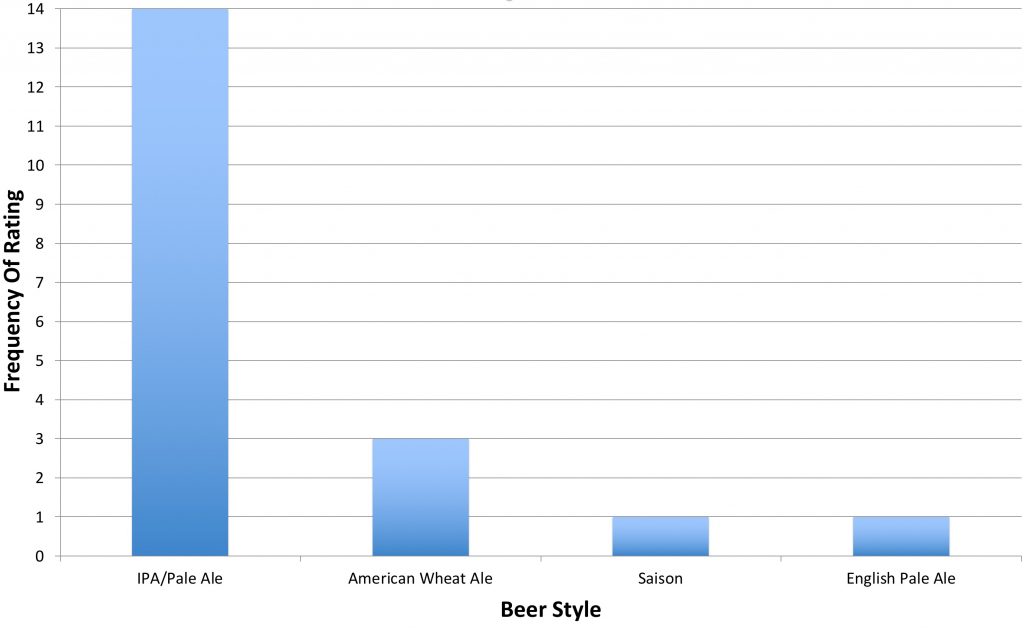
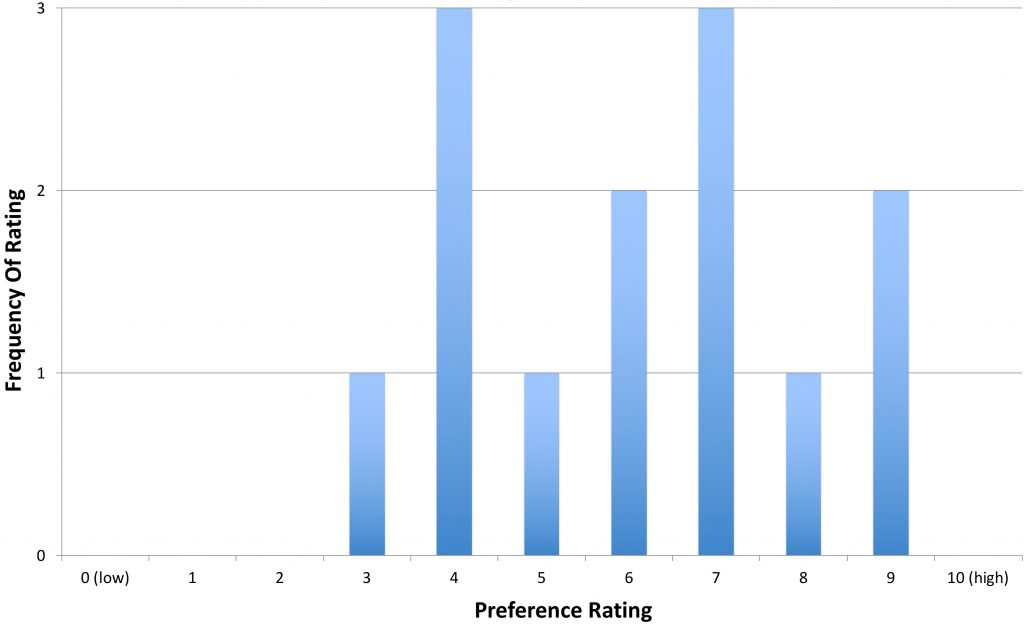











19 thoughts on “The Hop Chronicles | Simcoe (2016) Pale Ale”
Did I see that correctly? You fermented a lager yeast at ale temps?
isn’t pH 5.5 perfect for the room temp mash temp? i’ve been shooting for that for years now.
5.5 pH at room temp is roughly 5.3 pH at mash temp. So the pH is well within the proper pH range for mashing. Jason said his pH was higher than he was shooting for, not that it was out of range. I’d guess he was going for 5.2 pH at mash temps, or 5.4 pH at room temp.
I think they need to to an explanation on ph and temps on here, this is where a lot of people get confused. The ph you are shooting for should be measured at room temps .ie around 20-25C and between 5.2-5.3, this is where your buffer solutions are most accurate, also your ph4 and ph7 solutions should ideally be at this temp when you are calibrating your probe.
It is my understanding that the pH as measured at room temperature should be 5.4-5.6. That should put the mash pH between 5.1-5.3 at mashing temperatures.
Harley is correct. There was some confusion due to erroneous article in Zymurgy a few months ago. all pH measurements are to be taken once the sample is chilled to room temperature level. 5.2-5.4 pH range refers to samples measured at room temp, not at mash temp.
i guess something has changed in the last 15 years then
The one beer I made with Simcoe definitely smelled like cat piss. I wonder if it’s a seasonal thing? I’ll have to try it again.
That’s just it. There’s variability from crop to crop and grower to grower.
It changes on when in the season it’s picked as well, early vs. late can change things quite a bit. Oil content increases, but stability decreases. Is the catty flavor an example of Simcoe being picked late, and developing oils that contribute to a catty flavor? Or possibly losing shelf stability as a result of picking time? Hard to know.
Sharp, D. C., Townsend, M. S., Qian, Y., & Shellhammer, T. H. (2014). Effect ofHarvest Maturity on the Chemical Composition of Cascade and Willamette Hops.Journal of the American Society of Brewing Chemists, 72(4), 231-238.doi:10.1094/ASBCJ-2014-1002-01
I had the same experience and have heard similar complaints from other brewers in our Homebrew club. It does seem to be crop dependant. I’ve studie away from Simcoe and probably will continue to in the future. I don’t like to gamble that much with my beer.
I think it’s seasonal. I got some 2016 Simcoe at a good discount a couple of months ago, there is no cat piss in my batch either. It’s just nice and fruity with a hint of pine/dank.
For me Simcoe is crazy and believe me match with the saison style. Try it!!
Why did you use a lager yeast? For the clean profile to showcase the hops?
Having never tasted cat piss I can’t comment on that but Simcoe is my favorite hop. I’ll be making this beer soon!
It is indeed odd that there is no discussion whatsoever about the use of Czech pils yeast fermented at ale temps to produce the “best pale ale” he’s ever brewed. I know it’s not the focus of the write up, but I would have appreciated a side discussion about that aspect (as it relates to yeast-driven flavors). As seems to be the case these days, my guess is an exbeeriment was also conducted on this variable and a future post will cover that aspect.
I made a SMaSH two summers ago with Pilsner malt and Simcoe and it was amazing! I have some unopened Simcoe from 2014 (nitrogen flushed, mylar bag, in a chest freezer) that I should make this recipe with. I do need a lower ABV beer to rack a Barleywine on top of the yeast cake. Thanks for the inspiration to use some of my older hops!
2014 LOL
Just a tip from a brewing fellow.
Your CF Chiller is upside down.
=)